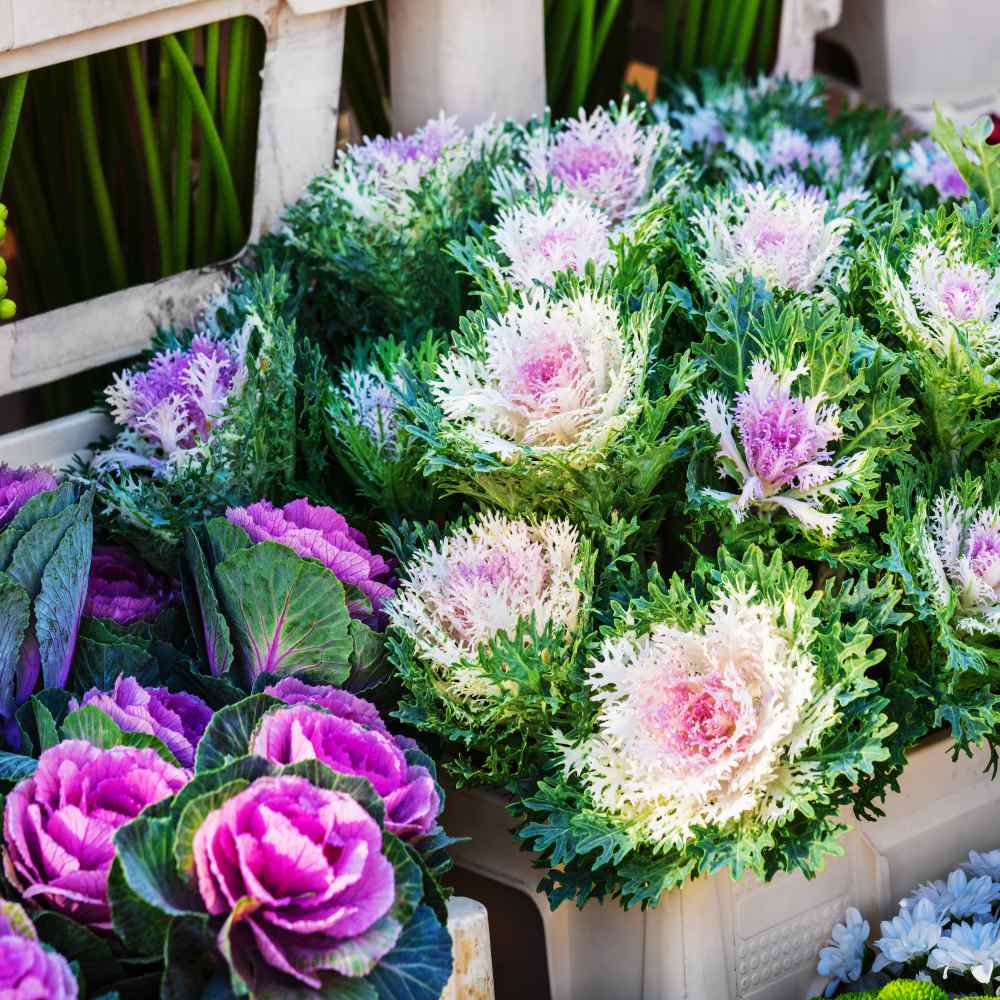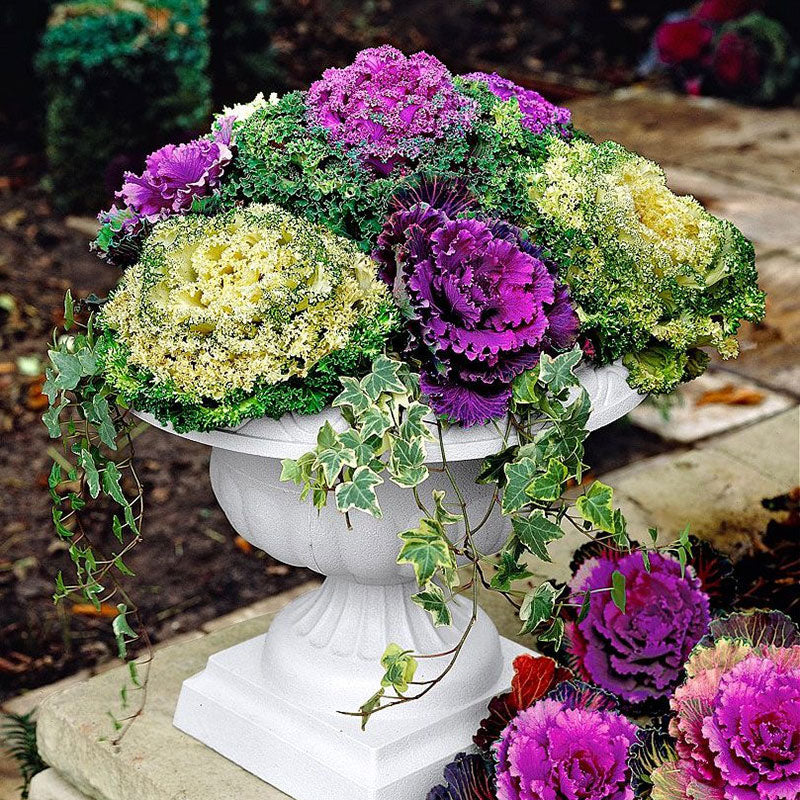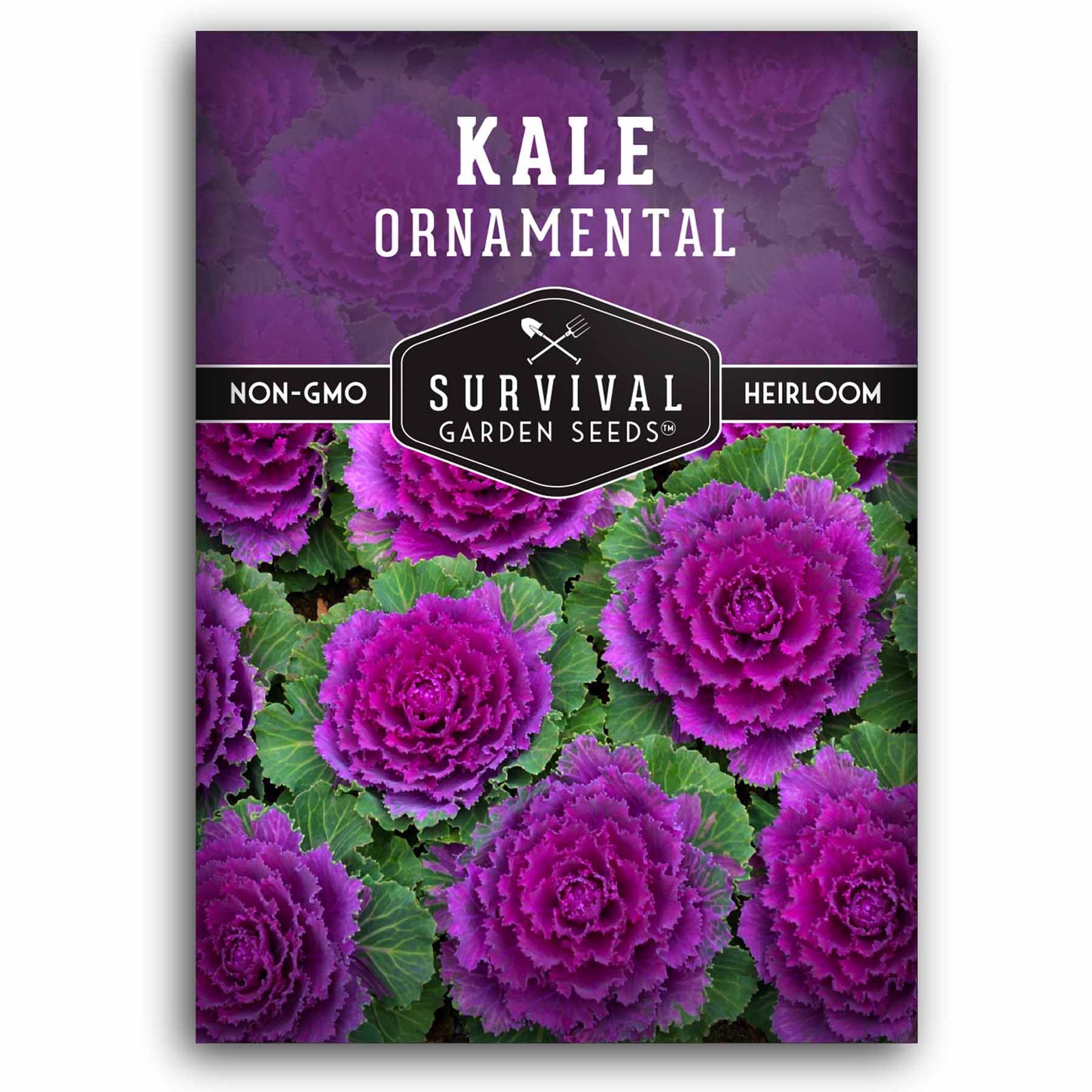Introduction to Decorative Kale
As a passionate gardener, I’ve always believed that adding a touch of vibrancy to your garden can elevate your outdoor space. One of my favorite ways to do this is by incorporating decorative kale into my garden designs. Ornamental kale, with its stunning colors and unique textures, adds both beauty and interest during the cooler months. In this article, let’s explore everything you need to know about decorative kale seeds, from selection to care and troubleshooting, ensuring you can create a dazzling display in your own garden.
What is Decorative Kale?
Decorative kale (Brassica oleracea) is a variety of ornamental cabbage, primarily grown for its vibrant foliage rather than its edible parts. Unlike traditional edible kale, which is typically green, decorative kale comes in a variety of colors, including purple, pink, and white. It thrives in cooler temperatures, making it a popular choice for fall and winter gardens.
Benefits of Growing Decorative Kale
- Visual Interest: Decorative kale adds a splash of color to your garden when most plants have gone dormant.
- Versatile Use: It can be used both in garden beds and as a container plant, making it adaptable to various spaces.
- Disease Resistance: Generally, ornamental kale is resistant to many pests and diseases that can affect other garden plants.
Selecting Decorative Kale Seeds
When it comes to selecting the right decorative kale seeds, here are some factors to consider:
Choosing the Right Varieties
There are several varieties of decorative kale, each with unique characteristics. Below is a comparison table of popular varieties:
| Variety Name | Color | Height | Best For |
|---|---|---|---|
| Winterbor | Green | 12-24 inches | Container gardens |
| Peacock | Purple, Pink | 12-18 inches | Flower beds |
| Osaka | White, Pink, Purple | 18-24 inches | Borders and focal points |
| Kamome | Green, Purple | 12-16 inches | Mixed arrangements |
Where to Buy Decorative Kale Seeds
You can purchase decorative kale seeds from local garden centers, nurseries, or online retailers. Look for reputable brands that specialize in high-quality seeds to ensure successful germination.

When to Plant Decorative Kale Seeds
Timing is crucial when growing decorative kale. Here’s a breakdown of the ideal planting times:
- Spring Planting: Start seeds indoors 6-8 weeks before the last frost date, and transplant outdoors in spring.
- Fall Planting: Sow seeds directly outdoors 6-8 weeks before the first frost date. This method allows the plants to mature in cooler temperatures, which enhances their color.
How to Plant Decorative Kale Seeds: A Step-by-Step Guide
Preparing the Soil
Ornamental kale thrives in well-drained, fertile soil. Here’s how to prepare:
- Clear the planting area of any weeds or debris.
- Loosen the soil to a depth of at least 12 inches.
- Mix in compost or well-rotted manure to enhance soil nutrients.

Planting the Seeds
Follow these steps for planting your decorative kale seeds:
- Plant seeds ¼ to ½ inch deep in rows spaced 18-24 inches apart.
- Water gently but thoroughly after planting.
- Cover the seeds lightly with soil and keep moist until germination (typically within 7-14 days).
Caring for Your Decorative Kale Plants
Once your kale has sprouted, proper care is essential to ensure healthy growth. Here are key aspects to consider:

Watering
Keep the soil consistently moist but not soggy. Water deeply once a week, increasing frequency during hot or dry spells.
Fertilization
Use a balanced fertilizer every 4-6 weeks during the growing season to promote healthy growth. Organic options like fish emulsion or seaweed extract are excellent choices.

Mulching
Apply a layer of mulch around the base to retain moisture, suppress weeds, and regulate soil temperature.
Common Pests and Problems
Pests to Watch For
While decorative kale is relatively pest-resistant, it can still fall victim to certain issues. Here are the most common pests to monitor:
- Aphids: These small insects suck the sap from the plants. A strong jet of water can dislodge them.
- Slugs and Snails: They love to chew on kale leaves. Setting out bait or using diatomaceous earth can help deter them.
- Cabbage Worms: These green caterpillars can wreak havoc. Handpicking or introducing beneficial insects like lacewings can keep their numbers down.

Common Issues and Solutions
Here are some common problems you might face while growing decorative kale, along with their solutions:
| Problem | Symptoms | Solution |
|---|---|---|
| Yellowing Leaves | Leaves turn yellow and may drop off. | Check for nutrient deficiency; a balanced fertilizer may be needed. |
| Stunted Growth | Plants grow slowly and appear weak. | Ensure adequate sunlight (at least 6 hours/day) and check for root-bound conditions. |
| Leaf Discoloration | Leaves develop brown spots or edges. | This can be due to overwatering or nutrient deficiencies; adjust your watering schedule accordingly. |
Harvesting and Using Decorative Kale
When to Harvest
While decorative kale is primarily ornamental, you can still enjoy the leaves if desired. Harvesting can begin when the leaves are large enough to eat, usually around 60-90 days after germination. The best time to harvest is in the morning when the leaves are crisp and dewy.

Creative Uses for Decorative Kale
Here are some fun and creative ways to use your harvested kale:
- As a colorful addition to salads or vegetable platters.
- In floral arrangements for added texture and interest.
- As a garnish for seasonal dishes, adding a unique visual element.
Tips for Success with Decorative Kale
Personal Experience
From my own gardening experience, I’ve learned a few tips that can dramatically improve your success rate with decorative kale:
- Start Indoors: I find that starting seeds indoors gives me a head start, especially in cooler climates.
- Group Plantings: Planting in groups creates a more impactful visual display. Mixing colors and varieties can really create a showstopper effect.
- Watch the Weather: Cover plants with cloth during unexpected frosts to protect their delicate leaves. They’re quite resilient, but a sudden drop in temperature can stress them.

FAQs About Decorative Kale Seeds
What is the best time of year to plant decorative kale seeds?
The best time to plant decorative kale seeds is in spring for summer growth or in early fall, around 6-8 weeks before the first frost.
How long does it take for decorative kale to grow?
From seed to maturity, decorative kale typically takes about 60-90 days, depending on the variety and growing conditions.
Is decorative kale edible?
Yes, while primarily grown for ornamental purposes, decorative kale is edible and can be used in salads or cooked dishes. However, its primary purpose is to add beauty to your garden.
Can decorative kale survive winter?
Yes, ornamental kale can survive in cooler temperatures, but they are not frost-hardy. A light frost can enhance their color, but harsh winter conditions may damage them.
How do I know if my decorative kale is healthy?
Healthy decorative kale will have vibrant leaves that are firm and free from discoloration, spots, or holes. Monitor for pests and ensure proper watering and fertilization.